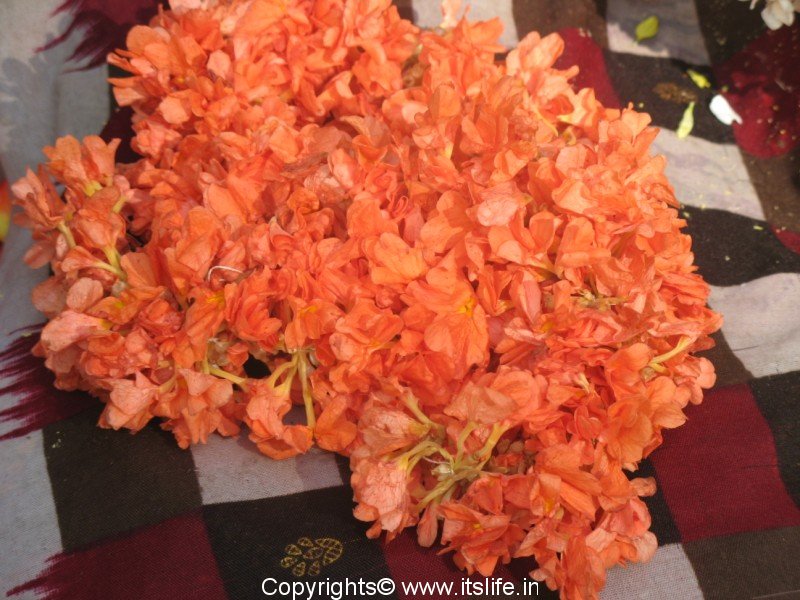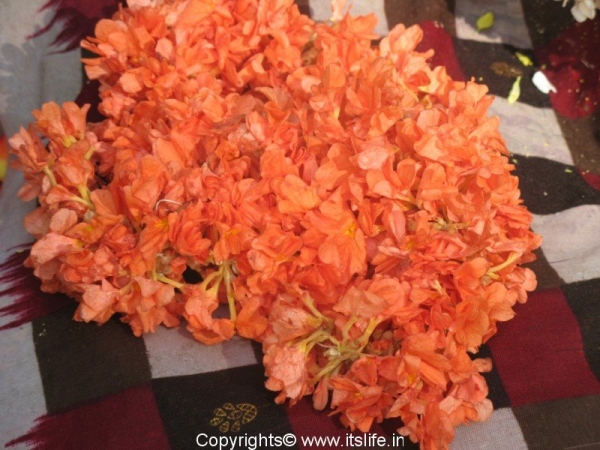In Kannada and Tamil Crossandra it is known as Kanakambara. It is very common in South India for the women to decorate their hair with a string of Kanakambara. While tying Jasmine flowers, Kanakambara are also used in between to add color. I used to pluck them in my Mama’s / Maternal uncle’s farm and mom used to string them along with white Jasmine flowers and Maruga / Marjoram leaves. The string would look lovely, with all the colors of the Indian National flag.
Sarees in Kanakambara color are very popular.
Plant Summary:
Crossandra infundibuliformis is the botanical name of Crossandra belonging to the family Acanthaceae (Mexican Petunia and Ruellia). In Marathi it is known as Aboli and in North Karnataka it is known as Abali hoovu.
Crossandra is a tropical, evergreen perennial shrub grown in India, Africa, Madagascar, Arabia, Malaysia and Sri Lanka. The shrub grows to a height of 4 to 5 feet. Crossandra is cultivated for their yellow and orange / coral color blooms. The plants bloom throughout the year. The flowers bloom on spikes and are funnel shaped and the stamen is included in the funnel. The leaves are glossy, oval, and deep-green about 2 inches long.
Another plant of the same family of Crossandra is called Green Shrimp plant or Turquoise Crossandra. The blooms of this plant have Aquamarine flowers.
Propagation:
The plant needs well-drained fertile soil with direct sunlight during the morning. Keep the plant trimmed for new growth and fresh blooms. When the flowers dry up the spikes dry and are a store for tiny black seeds. If water is sprayed on these dry spikes, the seeds burst making a crackling noise. These seeds germinate later. The same seeds can be collected and sown in pots of sandy peat in spring.
Saplings can be planted in pots of mud, peat and sand. February or March is ideal time for repotting.
Picture (above) – Yellow Crossandra
Plant Healing:
White flies attach these plants. This can be eliminated by spraying an appropriate insecticide.




